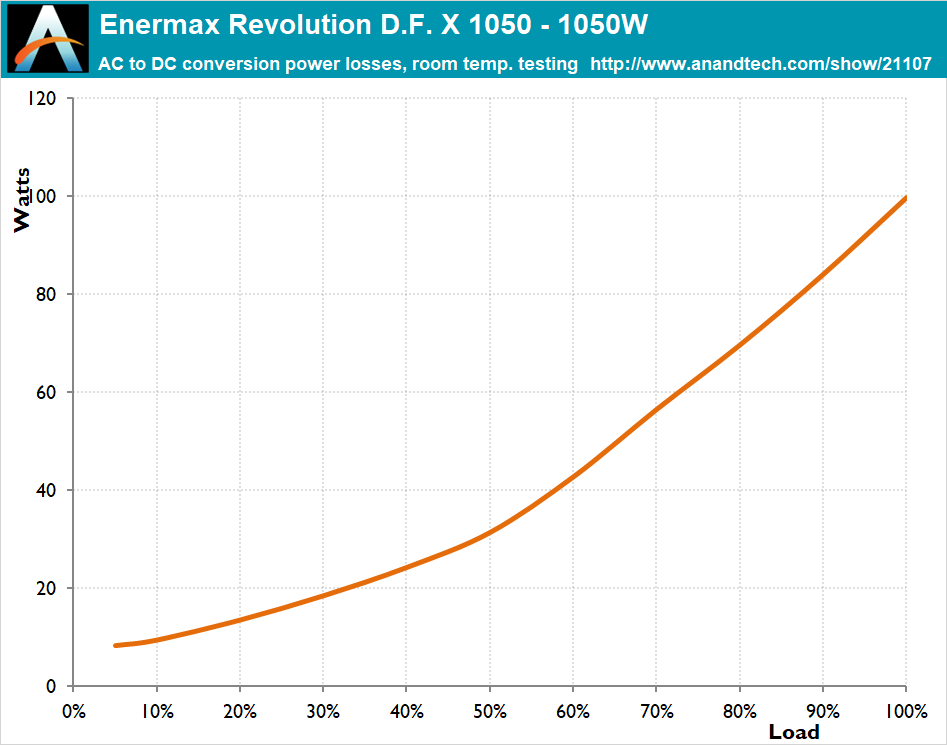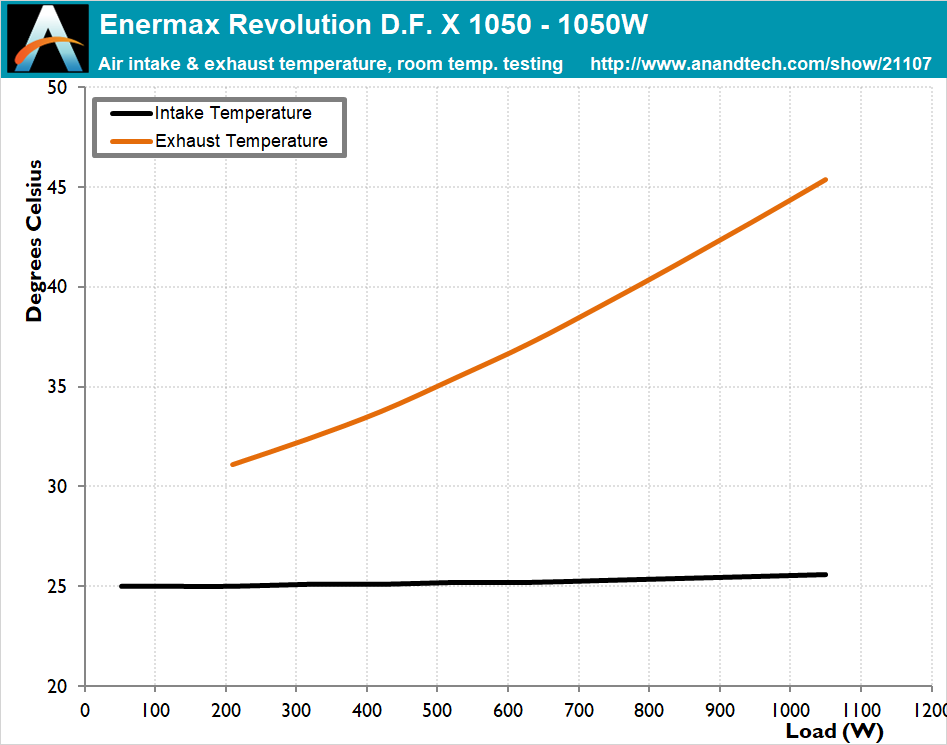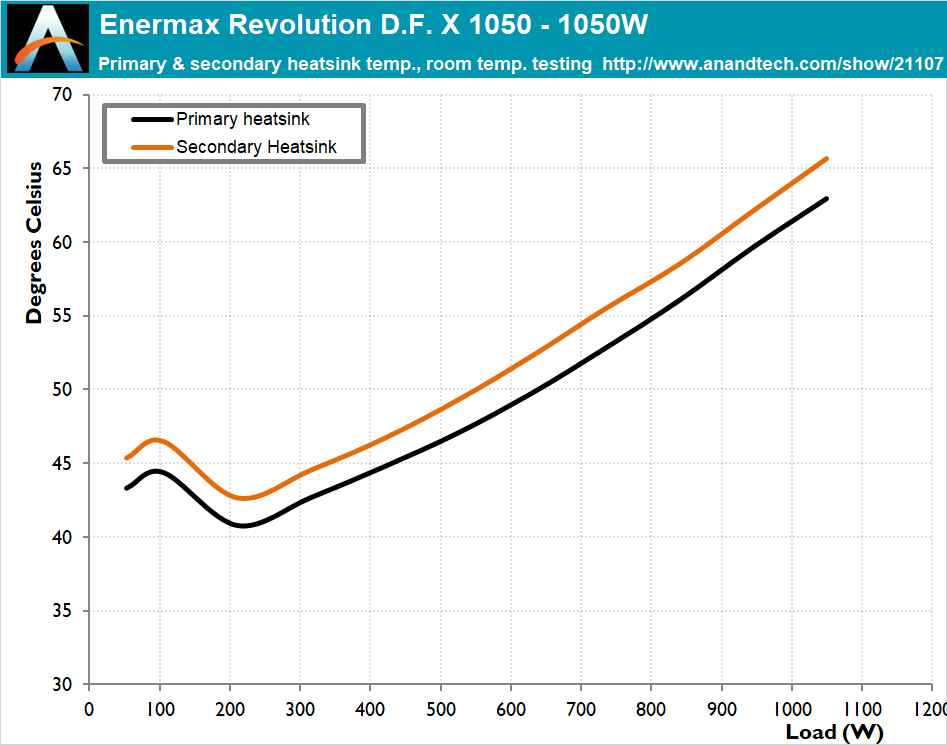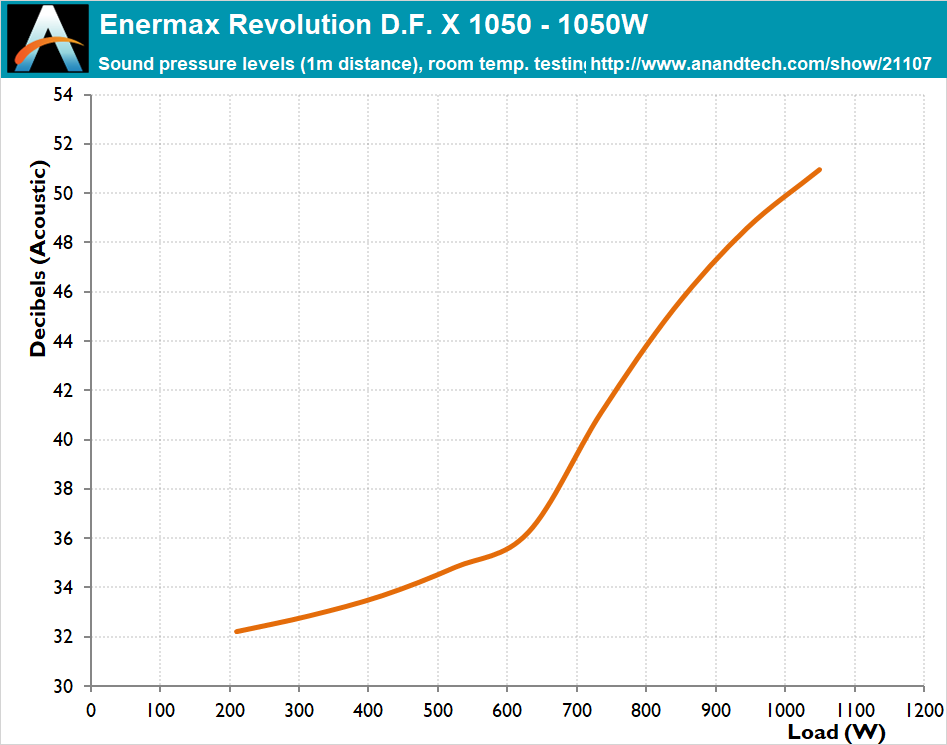The Enermax Revolution D.F. X 1050W PSU Review: High Power, Highly Reliable
by E. Fylladitakis on November 9, 2023 8:00 AM EST- Posted in
- Cases/Cooling/PSUs
- PSUs
- 80Plus Gold
- Enermax
- ATX v3.0
- 12VHPWR
- SANR
Cold Test Results (~25°C Ambient Temperature)
For the testing of PSUs, we are using high precision electronic loads with a maximum power draw of 2700 Watts, a Rigol DS5042M 40 MHz oscilloscope, an Extech 380803 power analyzer, two high precision UNI-T UT-325 digital thermometers, an Extech HD600 SPL meter, a self-designed hotbox and various other bits and parts. For a thorough explanation of our testing methodology and more details on our equipment, please refer to our How We Test PSUs - 2014 Pipeline post.
The Enermax Revolution D.F. X 1050 has a particularly interesting energy conversion efficiency curve. It is extremely efficient at low to medium loads, delivering figures that could easily grant it an 80Plus Platinum certification regardless of the input voltage. However, its efficiency drops significantly when the load is greater than 600 Watts, preventing the PSU from receiving an efficiency certification greater than 80Plus Gold. The average nominal load efficiency with an input voltage of 230 VAC is 92.7% a very high figure for an 80Plus Gold certified product. It drops significantly when the input voltage is reduced to 115 VAC, down to 90.2%, suggesting that the platform is largely optimized for a 230 VAC input, but it still easily meets the 80Plus Gold certification requirements.
By default, the Enermax Revolution D.F. X 1050 has a semi-fanless mode programmed, which signifies that the fan activation is dependent on the cooling demand. Unlike the vast majority of competitive products, there is no way to switch to an always-on mode for the cooling fan. Nevertheless, the programmed cooling profile is highly proactive, with the fan starting when the load is just above 150 Watts. The internal temperatures of the Enermax Revolution D.F. X 1050 are fairly low for a PSU with that kind of power output and such small dimensions.
The cooling profile of the Enermax Revolution D.F. X 1050 is optimized for low noise operation across the first half of the loading spectrum, with the fan spinning at a low speed with a load up to 600 Watts. After that point, the controller increases the speed of the fan sharply, quickly bringing the noise levels high, favoring good thermal performance and safety over acoustics. The fan reaches its maximum speed only when the unit is loaded at 100% capacity for a protracted period of time.















17 Comments
View All Comments
evanh - Monday, November 13, 2023 - link
The female pins are a new design. That's the most important change.The adjusted pin length is just a minor tweak, not important in any way.
E.Fyll - Monday, November 13, 2023 - link
The female - and male - pins are entirely the same.I have no idea where you picked up that nonsense, probably from some clickbait article of shorts, but, once again, the only difference is the length of the Sense pins and that is only taking place on the equipment's side too. You can read the specifications, they are publicly available. You should not be spreading misinformation.
evanh - Monday, November 13, 2023 - link
I don't know why you'd think those power pins are the same. The whole purpose of the 12V-2x6 plug even existing is to fix the overheating flawed design of the 12VHPWR plug. Having a couple of shorter signal pins ain't gonna make the slightest difference to fixing it.MamiyaOtaru - Tuesday, November 14, 2023 - link
you're sort of right. It' not really fixed. But the shorter signal pins do help ensure it is inserted all the way before it runs current. Still has deeper flaws thoughevanh - Wednesday, November 15, 2023 - link
Yes, 12VHPWR plug has deeper flaws - weak female power pins in the plug. And that is what is really being fixed with the introduction of the replacement 12V-2x6 plug.12VHPWR cables, both supplied with PSU and as adaptors, need to all be recalled and replaced with the newly introduced 12V-2x6 cables. All manufactures should be doing this immediately to stop the on-going damage to graphics cards.
Threska - Thursday, November 9, 2023 - link
"Ball-bearing engines are very reliable but not the quietest, however the PSU features a semi-passive design that will completely stop the fan while the load is low. "Doesn't look vibration isolated from chassis.
Samus - Thursday, November 9, 2023 - link
For the price it's hard to argue with these results, but I can't help but think, realistically, this should be considered an 800-watt PSU. It's capable of 1050w but it's operational sweet spot and efficiency are more in-line with 750-800w units, where continuous current will never exceed 80% load, or 600-650w. Since load is really inconsistent during most use cases (gaming, burst performance, etc) it's good to have the overhead and potential for 1000w+ but if you have a system design that often hovers around 650w load (like an RTX 4080 + i7-13700k) this is among the best candidates out there.